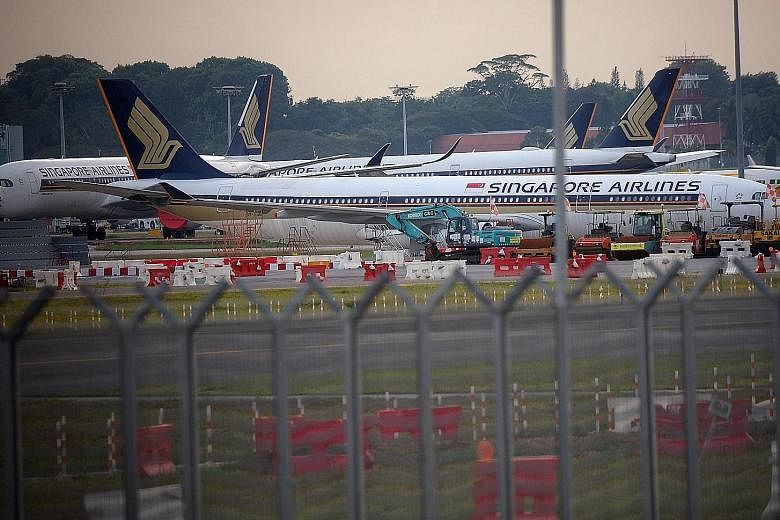Singapore Airlines (SIA) sank deep into the red with a $1.12 billion net loss for the three months ended June 30, its largest quarterly loss on record, as demand plummeted amid travel restrictions caused by the Covid-19 pandemic.
Revenue for the group plunged to $851 million, a 79.3 per cent drop from the $4.1 billion in the same period last year. Expenditure fell 51.6 per cent to $1.89 billion due to lower net fuel cost and cost-saving measures from capacity cuts, the company said in a regulatory filing yesterday.
SIA had entered the first quarter "at a time when market conditions were deteriorating rapidly due to the spread of Covid-19 globally", the group said. "Demand for air travel evaporated as travel restrictions and border controls were imposed around the world to contain the spread of the virus."
Passenger carriage fell across SIA, SilkAir and Scoot, resulting in a 99.5 per cent decline for the company.
The deep plunge in traffic for all three passenger airlines could only be partially offset by improvements in cargo flown revenue, SIA said.
"The airfreight capacity crunch, coupled with strong demand for urgent movements of personal protective equipment, pharmaceutical and fresh foods, brought about a significant improvement in cargo load factor," SIA said, adding that it has deployed passenger aircraft on cargo missions to boost cargo capacity. But the integration of SilkAir into the group is on track, it noted.
On its outlook, SIA noted that international air travel is not recovering as quickly as expected, with industry experts such as the International Air Transport Association and International Civil Aviation Organisation projecting that it will take between two and four years for passenger traffic numbers to return to pre-pandemic levels.
The group's passenger capacity by the end of the next quarter is projected to be about 7 per cent compared with pre-Covid-19 levels.
It further estimates that capacity may be less than half of pre-Covid-19 levels by the end of this financial year. "We are reviewing the shape and size of our network over the longer term, given Covid-19 and its impact on our passenger traffic and revenue, which will provide clarity on fleet size and mix that (SIA) will need."
The review is expected to be completed by end-September.
The group's shareholders' equity at end-June amounted to $17.6 billion, buoyed by an $8.8 billion rights issue backed by Temasek Holdings. It also secured $750 million from long-term loans on some of its Airbus A350-900 and Boeing 787-10 planes.
In all, SIA has raised about $11 billion in liquidity since the start of its financial year in April.
In a research report yesterday, DBS analyst Paul Yong urged investors to hold on to the company's shares. "Given the wide and varying degrees of success in flattening the curve or managing the outbreak among various countries, we believe that international air travel demand could take up to a year to gradually recover to pre-Covid-19 levels," he said.
The key risk that the company faces is "if travel demand remains substantially subdued for a prolonged period", he added. "While air travel demand has plunged quickly in recent weeks, a prolonged drop in air travel demand will lead to more losses for SIA."












